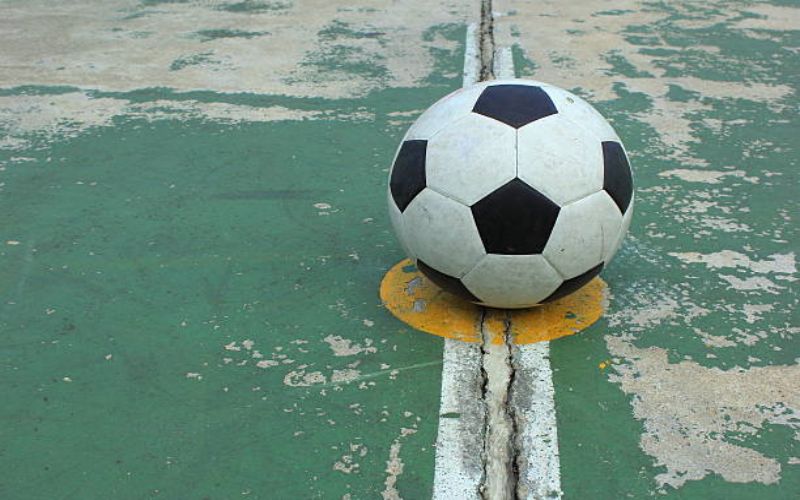Table of Contents

The Birth of the Vulcanized Rubber Soccer Ball
Vulcanized rubber soccer balls have revolutionized the game of football. Gone are the days of heavy leather balls that would become waterlogged during rainy matches. The introduction of vulcanized rubber soccer balls has not only improved the playing experience but has also enhanced the overall performance of players. In this article, we will delve into the fascinating world of vulcanized rubber soccer balls and explore their various aspects.
The Process of Vulcanization
Vulcanization is a chemical process that involves treating rubber with sulfur to improve its strength, durability, and elasticity. This process was first discovered by Charles Goodyear in the mid-19th century and has since been widely used in various industries, including the production of soccer balls. By subjecting rubber to high heat and sulfur, the molecules within the rubber material cross-link, resulting in a more robust and resilient product.
The Advantages of Vulcanized Rubber Soccer Balls
One of the primary advantages of vulcanized rubber soccer balls is their enhanced durability. Unlike older leather balls that would wear out quickly, vulcanized rubber balls can withstand the rigors of intense gameplay without losing their shape or integrity. Additionally, the vulcanization process makes the rubber less susceptible to damage from water, thus preventing the ball from becoming waterlogged during wet conditions.
Improved Ball Control and Accuracy
The unique properties of vulcanized rubber make it an ideal material for soccer balls. The increased elasticity and rebound of vulcanized rubber allow players to have better ball control, as the ball responds predictably to their movements. Moreover, the smooth surface of vulcanized rubber soccer balls provides excellent grip, enabling players to execute precise passes and shots with greater accuracy.
Reduced Impact on Player's Feet
Vulcanized rubber soccer balls offer another significant advantage over their leather counterparts – reduced impact on the player's feet. The soft yet resilient nature of vulcanized rubber cushions the impact when players kick the ball, minimizing the risk of foot injuries. This is particularly beneficial for young players who are still developing their kicking technique and may be more prone to foot strains or sprains.
Consistent Performance in Various Weather Conditions
Unlike leather balls, vulcanized rubber soccer balls perform consistently in different weather conditions. Whether it's scorching heat or freezing cold, vulcanized rubber maintains its shape and elasticity, ensuring that players can enjoy a consistent playing experience regardless of the climate. This makes vulcanized rubber soccer balls suitable for use in both professional matches and casual games.
Innovation in Ball Design
With the introduction of vulcanized rubber soccer balls, manufacturers have been able to experiment and innovate in ball design. The versatility of vulcanized rubber allows for the creation of various panel configurations, surface textures, and patterns, which can influence the ball's flight characteristics. These advancements in ball design have led to the development of balls that exhibit improved aerodynamics, stability, and overall performance.
The Impact on Player Skills and Techniques
The use of vulcanized rubber soccer balls has had a significant impact on the development of player skills and techniques. The improved control and accuracy offered by these balls have encouraged players to refine their dribbling, passing, and shooting abilities. Furthermore, the consistent performance of vulcanized rubber balls across different playing surfaces has enabled players to adapt their playing style accordingly, resulting in a more dynamic and versatile game.
Maintenance and Care for Vulcanized Rubber Soccer Balls
While vulcanized rubber soccer balls are highly durable, proper maintenance and care are essential to ensure their longevity. It is recommended to store the balls in a cool and dry place when not in use, as exposure to extreme heat or moisture can degrade the rubber over time. Additionally, regular cleaning with mild soap and water can help remove dirt and debris from the ball's surface, maintaining its optimal performance.
Future Innovations in Vulcanized Rubber Soccer Balls
The world of soccer is constantly evolving, and so is the technology behind vulcanized rubber soccer balls. Manufacturers are continuously researching and developing new materials and manufacturing techniques to further enhance the performance and durability of these balls. Future innovations may include the integration of smart technologies, such as sensors and microchips, to provide real-time data on ball speed, spin, and trajectory, allowing players and coaches to gain valuable insights for training and tactical purposes.
Conclusion
The introduction of vulcanized rubber soccer balls has undoubtedly had a profound impact on the game of football. From improved durability and ball control to reduced impact on players' feet, these balls have become an integral part of the sport. As technology and innovation continue to drive the evolution of soccer, we can expect further advancements in the design and performance of vulcanized rubber soccer balls, enhancing the game for players and fans alike.
